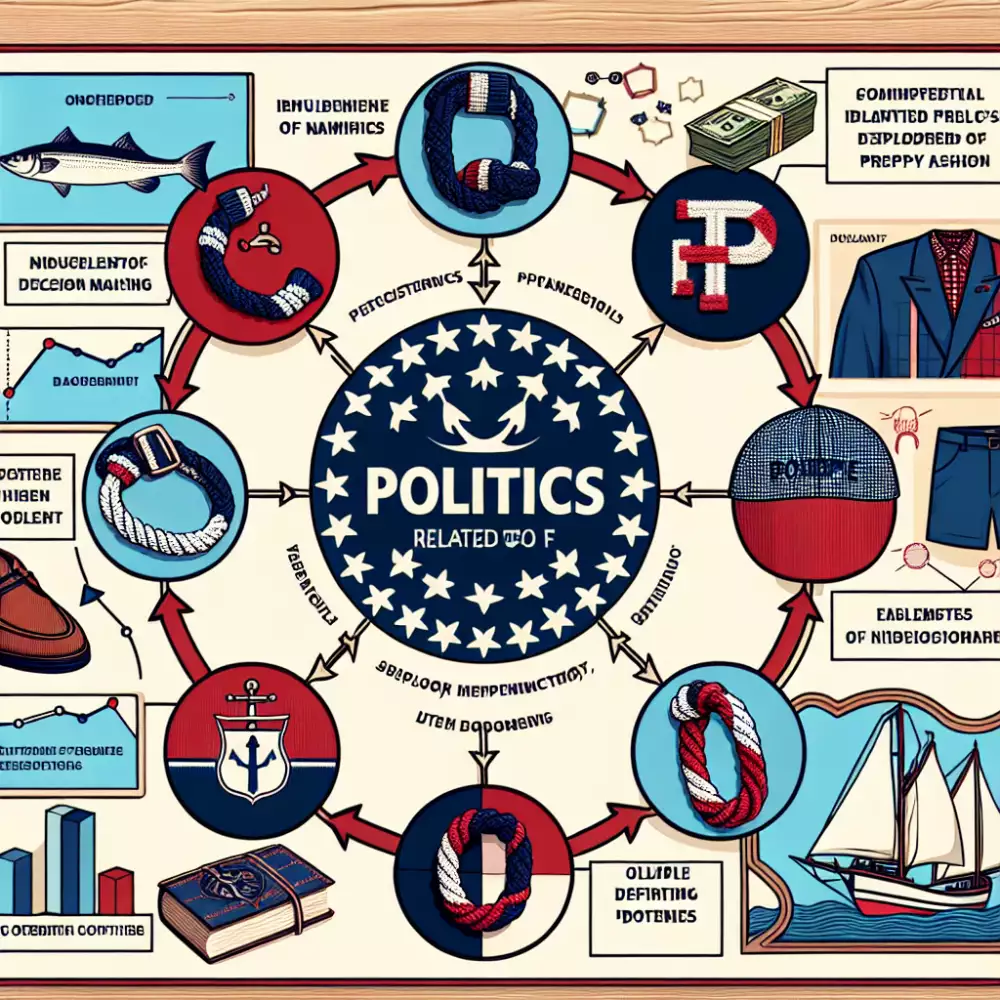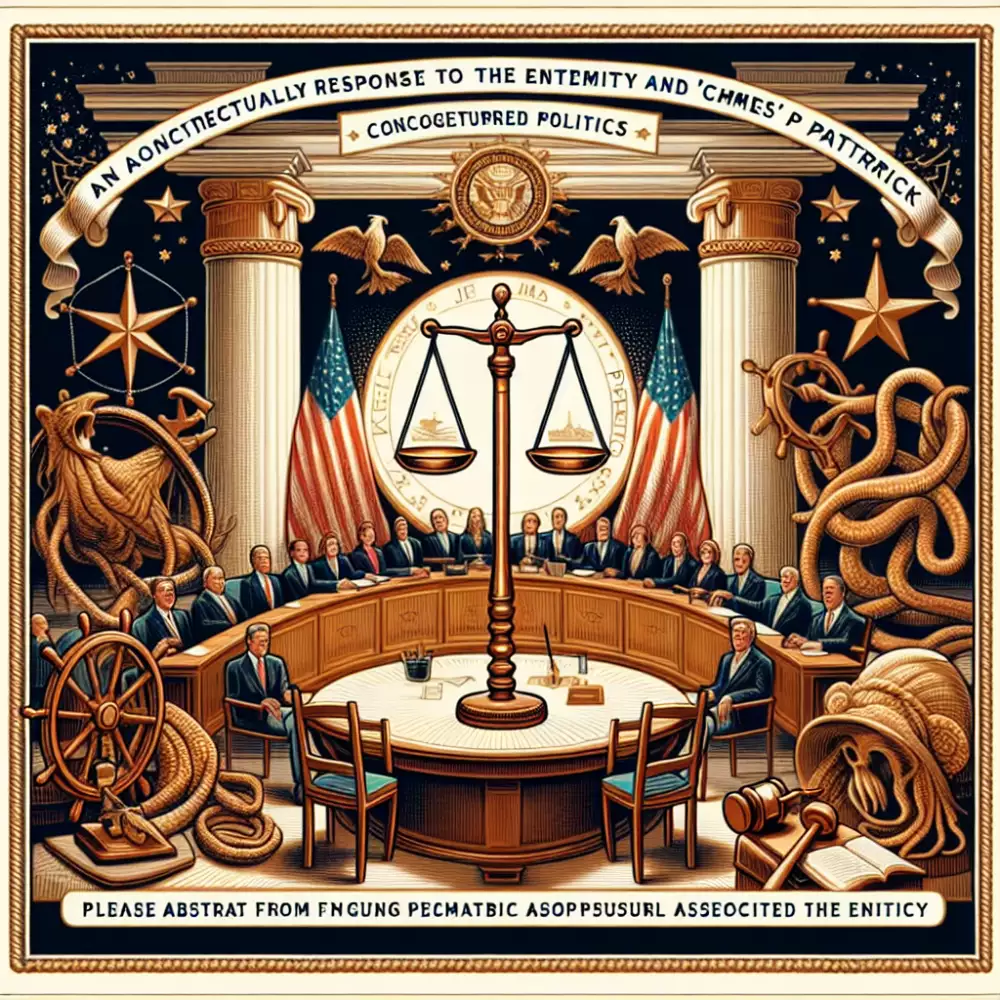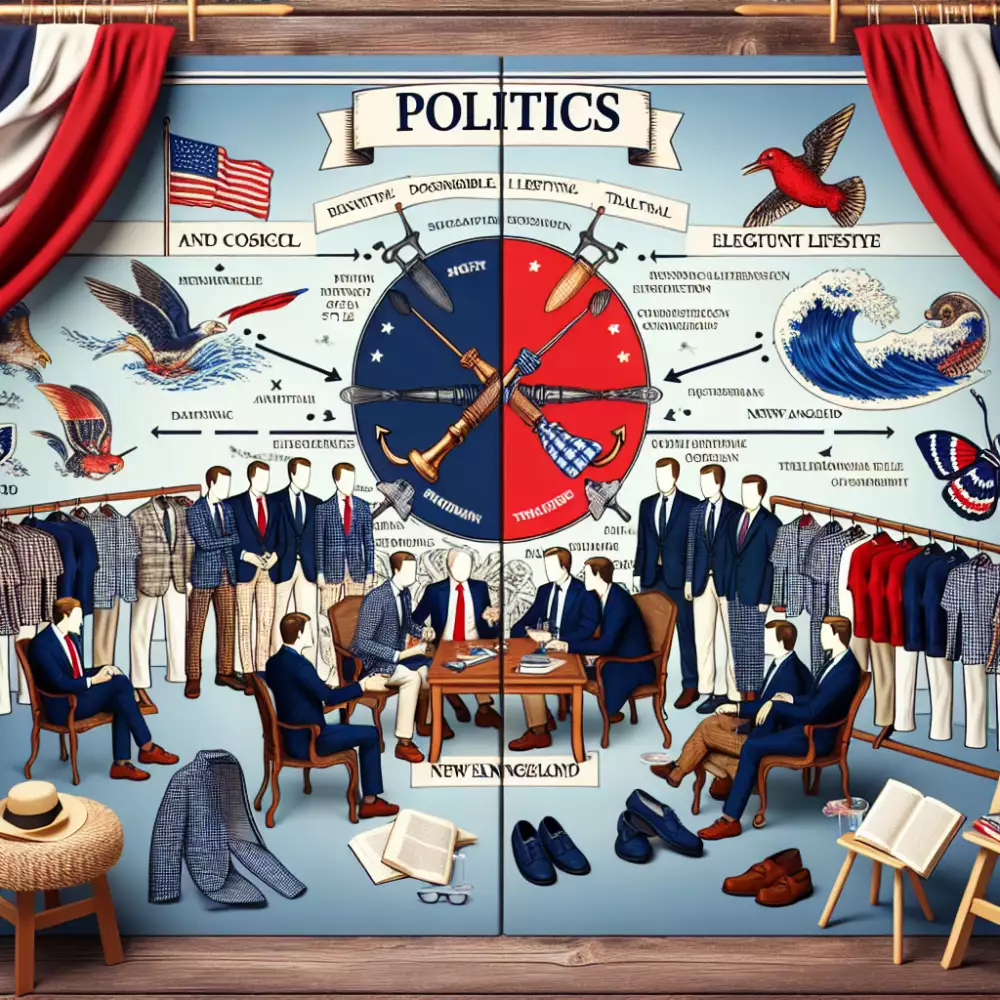Preppy Politics: Unpacking the Kiel James Patrick Brand

Preppy Style
Kiel James Patrick, with his idyllic imagery of New England life, sailboats, and golden retrievers, has become synonymous with a modern take on "preppy" style. However, this carefully curated aesthetic exists within a larger conversation about the politics of representation and aspiration.
The brand's vision of preppy, while visually appealing, often presents a very specific and arguably exclusionary version of American life. Critics point to the lack of diversity in KJP's marketing and the potential romanticization of a lifestyle out of reach for many. The brand's association with wealth, leisure, and a seemingly homogenous community raises questions about who is included and excluded from this aspirational world.
While KJP himself has stated a desire to promote traditional values and a simpler life, the brand's messaging intersects with broader societal discussions about class, privilege, and access. The romanticized portrayal of a preppy lifestyle, often associated with historical power structures, can be seen as tone-deaf in a time of increasing awareness about social inequality.
Whether intentional or not, the KJP brand, by virtue of its aesthetic and target audience, participates in a political conversation about the image of American success and happiness. This conversation extends beyond fashion and lifestyle choices, prompting a deeper look at the values and narratives that brands, particularly those as influential as KJP, choose to promote.
Americana Imagery
Kiel James Patrick's brand heavily leans on Americana imagery, evoking a nostalgic and idealized vision of American life. This carefully curated aesthetic, featuring idyllic New England settings, vintage cars, and preppy fashion, speaks to a longing for a simpler, more traditional time. However, this romanticized imagery has also drawn criticism for its lack of diversity and inclusion. Critics argue that the brand's narrow portrayal of American life excludes and ignores the experiences of many Americans, particularly people of color and those from marginalized communities.
The brand's reliance on Americana imagery intersects with politics in several ways. Firstly, it taps into a certain segment of American society that values tradition, patriotism, and a nostalgic view of the past. This demographic often aligns with conservative political ideologies. Secondly, the brand's lack of diversity and inclusion has led some to criticize it for promoting an exclusionary vision of American identity, one that reinforces existing power structures and social hierarchies.
The debate surrounding Kiel James Patrick highlights the complex relationship between branding, imagery, and politics in contemporary society. It underscores how brands, even those seemingly apolitical, can become entangled in political discourse through their messaging and aesthetics.

Nostalgia Marketing
Kiel James Patrick's brand heavily leans into nostalgia marketing, evoking a romanticized vision of preppy Americana. This carefully curated aesthetic, featuring idyllic New England settings, vintage cars, and classic American fashion, resonates with a longing for a simpler, more traditional time. This resonates particularly with millennials who grew up during the rise of the internet and rapid globalization, offering a sense of comfort and familiarity in a rapidly changing world.
However, this romanticized portrayal has drawn criticism for its inherent exclusion. The brand's almost exclusively white models and idyllic portrayals of wealth and privilege present a very specific and unattainable image of American life, ignoring the country's diverse realities and historical complexities. This raises questions about the politics of nostalgia and who gets to be included in these idealized visions of the past. While the brand's aesthetic is undeniably appealing, its lack of inclusivity and potential to perpetuate a sanitized and exclusionary view of American history are important points of consideration.
Exclusionary Branding
The brand's image, meticulously crafted around an idealized New England lifestyle, often featuring idyllic scenes of sailing, fall foliage, and cozy gatherings, has been criticized for its lack of diversity and inclusivity. Critics argue that this curated aesthetic, while aspirational for some, effectively excludes and alienates individuals who do not fit this narrow mold.
The brand's marketing primarily features white models, often with a preppy aesthetic, further solidifying the perception of an exclusive community. This lack of representation has sparked conversations about the brand's role in perpetuating limited and potentially harmful societal norms.
While some argue that the brand simply reflects the demographics of its target audience, others contend that it has a social responsibility to be more inclusive and represent the diversity of American society. This debate highlights the complex intersection of branding, representation, and social responsibility in today's world.
Lack of Diversity
Kiel James Patrick's brand, known for its idealized portrayal of New England charm, has faced criticism for its lack of diversity. The brand's imagery, often featuring predominantly white models in idyllic settings, has been called out for perpetuating a narrow and exclusionary vision of American life. This lack of representation has sparked conversations about the role of brands in promoting inclusivity and the importance of reflecting the diversity of their customer base.
Critics argue that Kiel James Patrick's brand imagery reinforces a romanticized view of a predominantly white, upper-class lifestyle, which does not reflect the reality of many Americans. This lack of diversity extends beyond race and ethnicity to include body type, age, and socioeconomic background.

While the brand has made some efforts to diversify its marketing materials in recent years, critics argue that these changes have been minimal and that the brand still largely caters to a homogeneous demographic. The lack of diversity in Kiel James Patrick's branding raises important questions about representation and inclusivity in the fashion industry and beyond.
Environmental Concerns
The idyllic imagery projected by Kiel James Patrick, often featuring pristine New England landscapes, raises important questions about environmental responsibility. The brand heavily relies on promoting a lifestyle intertwined with nature, from showcasing products in bucolic settings to hosting events like the Annual Cranberry Bog Collection photo shoot. This connection to the environment makes it crucial to examine the brand's environmental practices. Consumers are increasingly aware of the environmental impact of their choices, and brands like Kiel James Patrick, which heavily leverage a nature-inspired aesthetic, face scrutiny regarding their sustainability initiatives. While the brand has not been embroiled in major environmental controversies, the lack of publicly available information about their production processes, material sourcing, and efforts to minimize waste raises concerns. Transparency in these areas is essential for brands seeking to align with the growing consumer demand for eco-consciousness. Addressing these concerns proactively through concrete actions and transparent communication will be vital for Kiel James Patrick to maintain its image and resonate with environmentally conscious consumers.
Labor Practices Scrutiny
Kiel James Patrick, a lifestyle brand known for its nautical-inspired accessories and clothing, has faced scrutiny over its labor practices. Critics have raised concerns about the brand's reliance on overseas manufacturing, particularly in countries with lower labor standards.
The brand's commitment to ethical sourcing and fair labor practices has been questioned. Transparency in its supply chain has also been a point of contention. Consumers have become increasingly aware of the social and environmental impact of their purchasing decisions. They are demanding greater accountability from brands regarding their manufacturing processes.
The scrutiny surrounding Kiel James Patrick's labor practices highlights the growing importance of ethical considerations in the fashion industry. As consumers become more discerning, brands face mounting pressure to prioritize fair labor standards and sustainable practices throughout their supply chains.

Social Media Influence
Kiel James Patrick's brand heavily relies on social media, particularly Instagram, to cultivate a specific aesthetic and lifestyle. This carefully curated online presence, featuring idyllic New England settings, evokes a romanticized, nostalgic vision of America. However, this idealized portrayal has drawn criticism for its lack of diversity and its potential to promote exclusionary values.
The brand's imagery often centers on a homogeneous group of predominantly white models, perpetuating a limited and arguably exclusionary view of American life. This lack of representation has sparked debate about the brand's politics and whether it inadvertently reinforces existing social hierarchies.
While Kiel James Patrick himself rarely engages in overt political commentary, the brand's aesthetic and messaging, whether intentional or not, carry political undertones. By presenting a particular image of American life, one that harks back to a more traditional era, the brand implicitly aligns itself with certain values and ideologies. This has led some to interpret the brand's messaging as promoting a conservative worldview, one that celebrates a romanticized past and potentially excludes those who do not fit within that narrow framework.
The brand's reliance on social media further complicates the issue. The curated nature of online platforms allows for the projection of idealized versions of reality, often masking the complexities and nuances of real life. While Kiel James Patrick's social media presence may offer a visually appealing escape, it's crucial to recognize the potential social and political implications of such carefully constructed narratives.
Celebrity Endorsements
Kiel James Patrick, a lifestyle brand known for its nautical-inspired accessories and clothing, has carefully cultivated a distinct brand image rooted in classic Americana and New England charm. This meticulously crafted aesthetic, often associated with a romanticized vision of preppy style and traditional values, has drawn both praise and criticism, particularly regarding its political implications.
While the brand itself remains publicly apolitical, its association with certain celebrities and influencers has fueled speculation about its political leanings. The brand's visibility among figures often linked to conservative values and lifestyles has led some to perceive Kiel James Patrick as aligning with those political perspectives.
This association, whether intentional or perceived, highlights the complex relationship between brands, celebrity endorsements, and political interpretations in today's socially aware marketplace. Consumers increasingly view their purchasing decisions through a lens of personal values, including political affiliations. As a result, brands like Kiel James Patrick, even when not explicitly political, can become entangled in political discourse based on the perceived values and affiliations of their endorsements and partnerships.

Consumer Activism Response
Consumer activism surrounding Kiel James Patrick (KJP) and its brand largely stems from perceptions of the lifestyle it portrays and the political affiliations associated with it. Critics argue that the brand promotes an idealized, exclusionary vision of New England life, often perceived as favoring a white, affluent demographic. This perception was exacerbated by the brand's association with politically conservative figures and stances, including public support for certain political figures and ideologies.
This association sparked calls for boycotts and criticism on social media platforms, with users expressing concerns about aligning their consumer dollars with values they perceived as contrary to their own. Conversely, the brand also garnered support from individuals who identified with its aesthetic and values. This dynamic highlights the complex intersection of consumerism, social media, and political affiliation in the digital age, where brands can become lightning rods for broader societal debates.
Publikováno: 06. 07. 2024
Kategorie: Fashion



